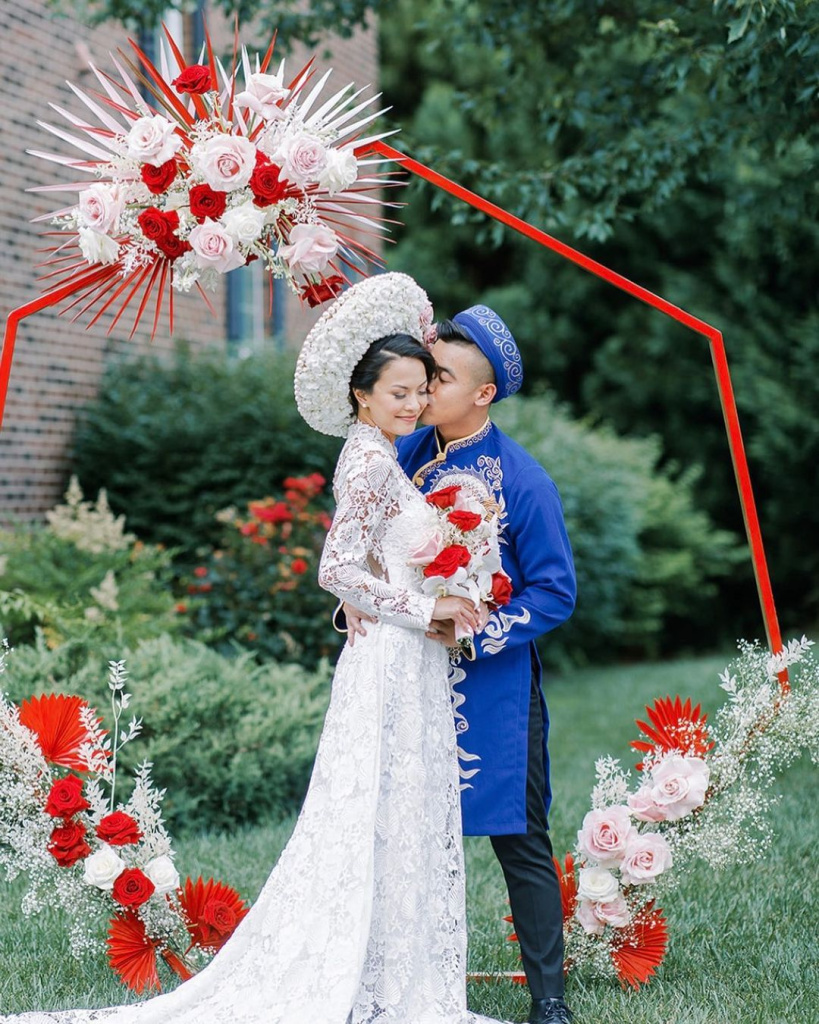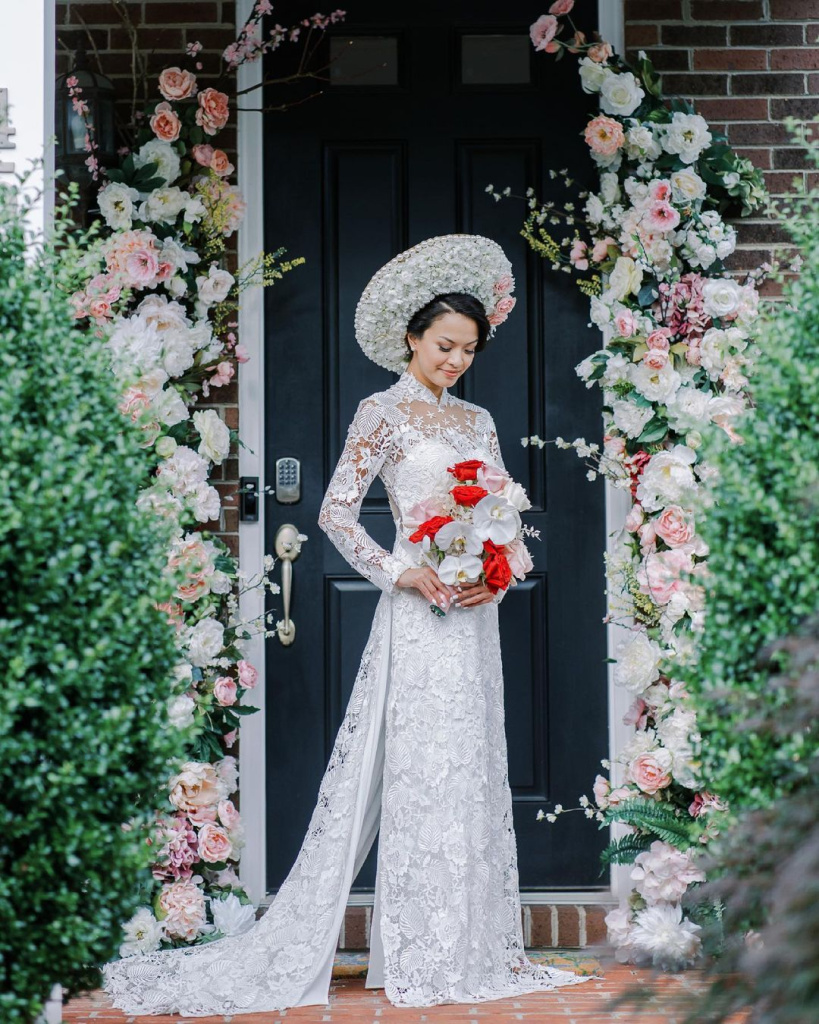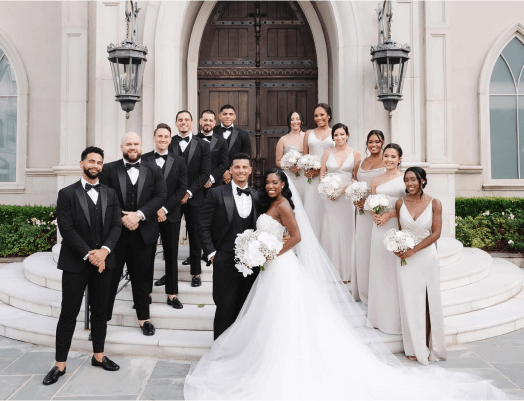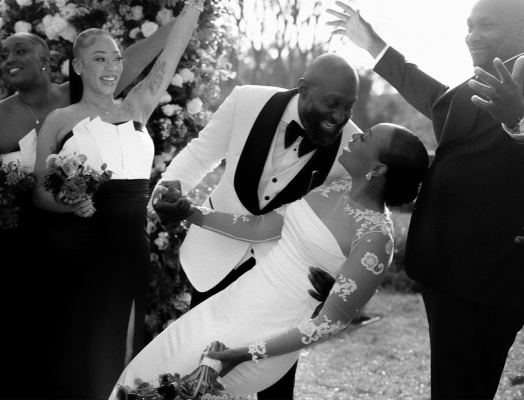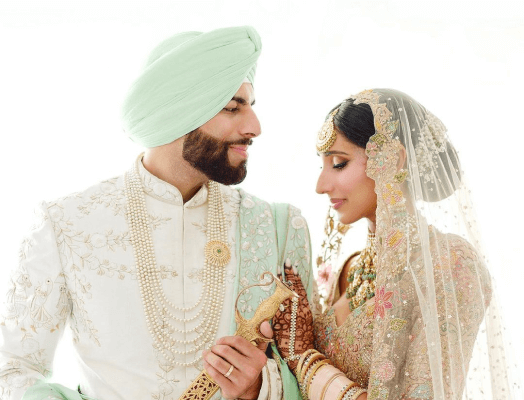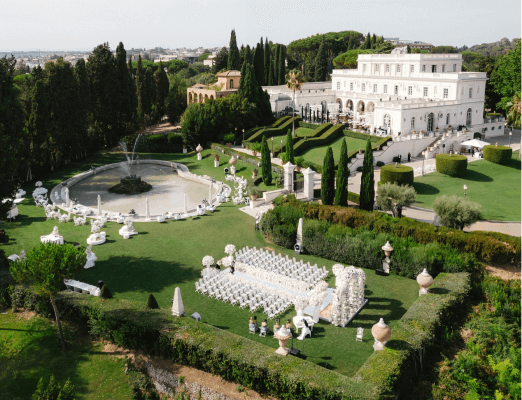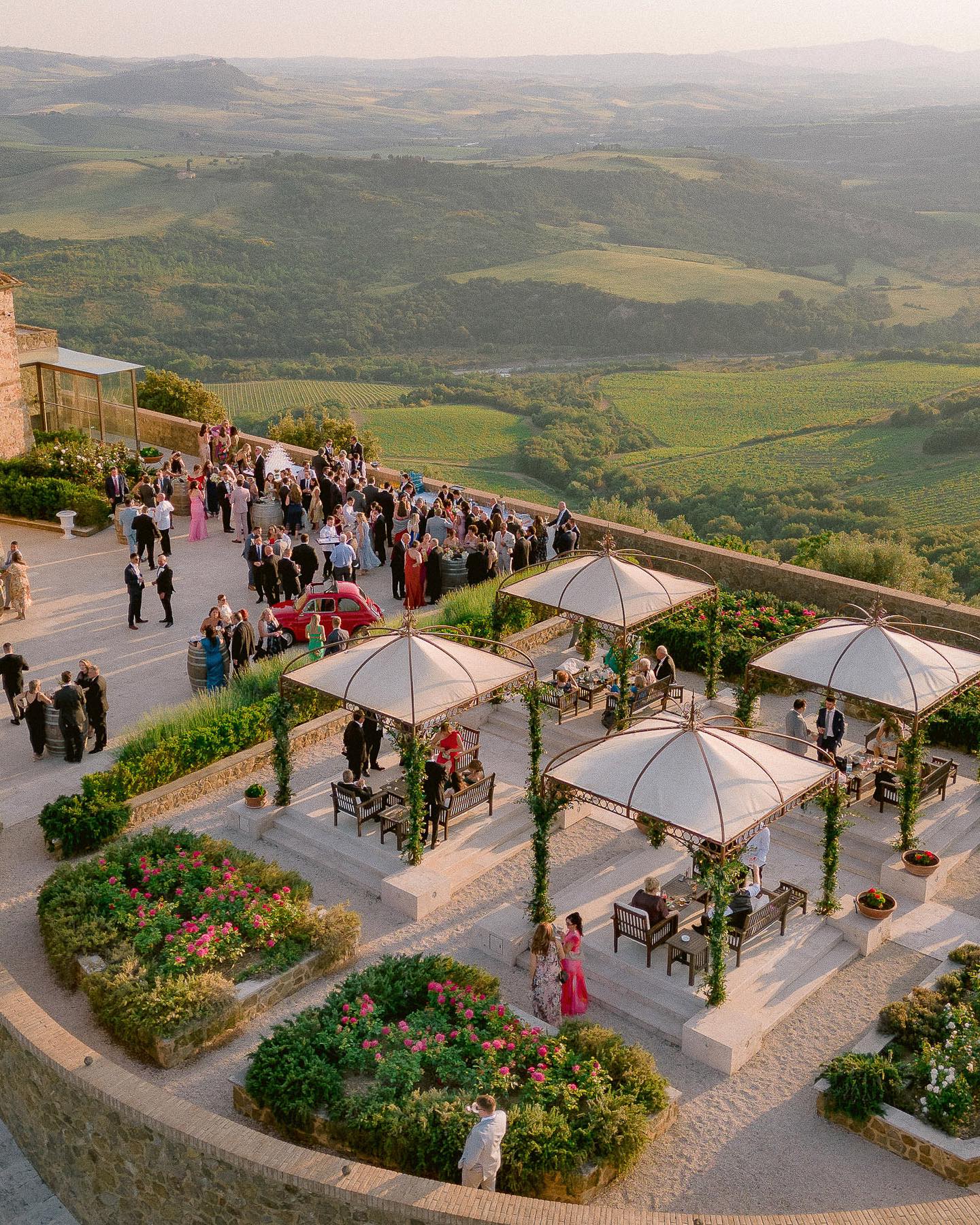Your Guide to Vietnamese Wedding Traditions
- Author: Natali Grace Levine
- Reading time: 12 min 48 sec
- Publication date: 08/15/2024
- Updated: 08/15/2025
- Lễ Dạm Ngõ (Engagement Ceremony)
- Auspicious Wedding Date
- Trình Trà (Vietnamese Tea Ceremony)
- Áo Dài - The Traditional Vietnamese Bridal Wear
- Bóng Đèn (Wedding Lanterns)
- Ceremony Without an Officiant
- Bánh Hỏi (Wedding Feast)
- Xe Hoa (Wedding Car)
- Hair Combing Ceremony
- Đón Dâu (Receiving the Bride)
- Throwing of the Conical Hat
- Cưới Hỏi (Wedding Announcements)
- Gate Crashing Games
- Lion Dancers
- Gift Exchange
- The Second Reception
- The Final Blessing
Vietnamese weddings are a vibrant tapestry of cultural traditions that paint a vivid picture of the country's rich heritage and deep-rooted values. These ceremonies are not just about marking the union of two people but are a vibrant, communal celebration of family and societal norms, woven through centuries of history and modernity. As we explore these Vietnamese wedding traditions, it's like stepping into a colorful world where every ritual has a story, every custom has a legacy, and every celebration brings a new beginning.
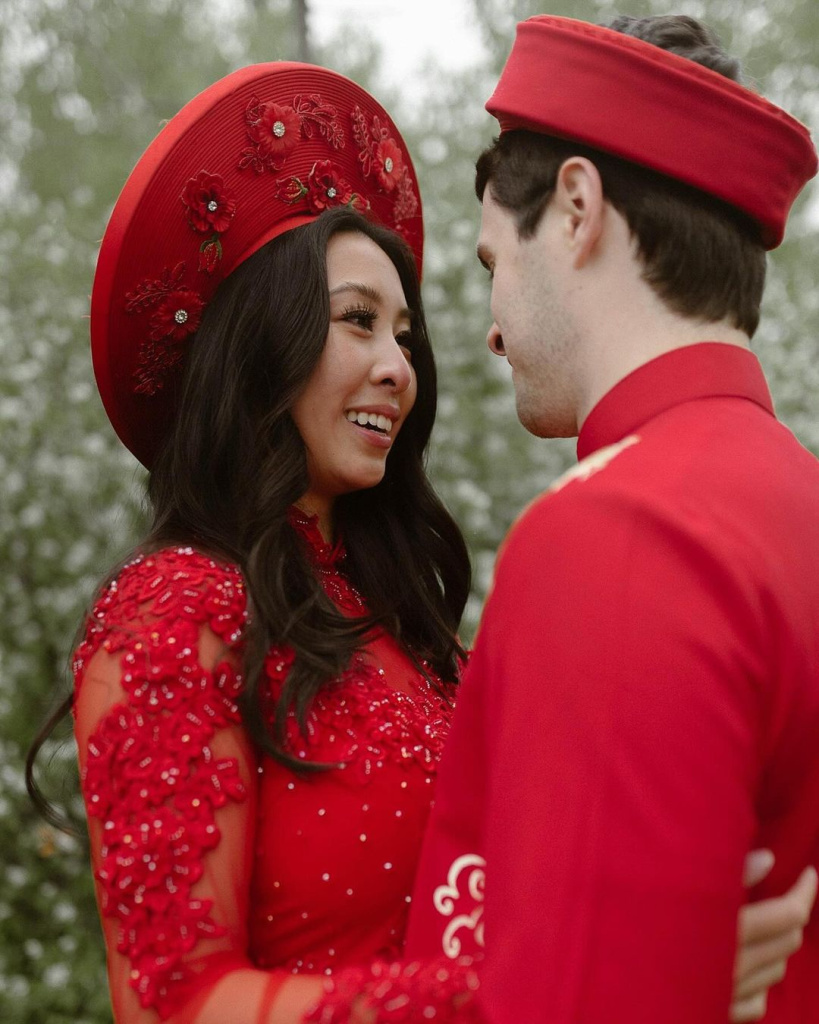
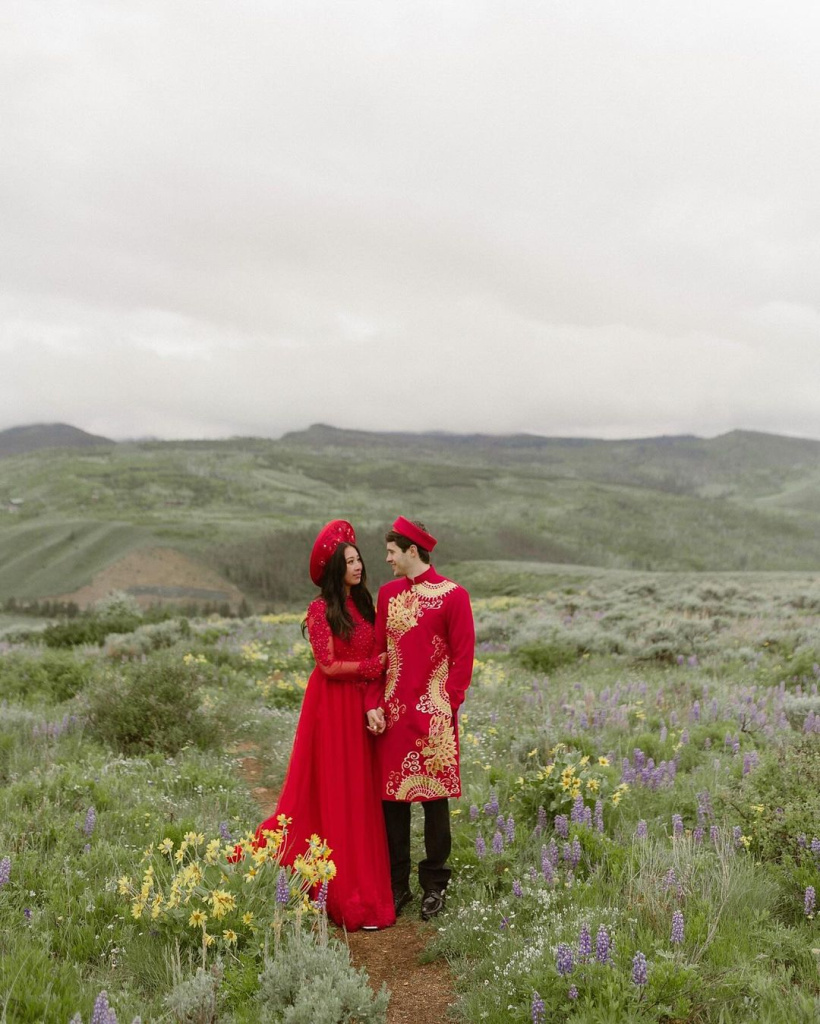
Find Your Perfect Wedding Vendors
Lễ Dạm Ngõ (Engagement Ceremony)
Before the wedding bells ring, the engagement ceremony, or Lễ Dạm Ngõ, sets the stage. This Vietnam wedding tradition involves a formal meeting between the two families where they discuss the forthcoming nuptials and exchange gifts wrapped in red as symbols of luck and prosperity. Historically, this was also the time when the wedding date would be set according to astrological signs. In modern times, while some couples choose to simplify this ceremony, it still remains a significant gesture of respect and readiness between families.
At its core, Lễ Dạm Ngõ is about formalizing the bond between the two families. The groom's family typically brings gifts such as betel leaves, areca nuts, wines, and other offerings, which are carefully arranged in red-lacquered boxes—a color that signifies luck and happiness in Vietnamese culture. The ceremony is usually marked by a spokesperson from each family discussing the virtues and qualities of the bride and groom, ensuring that both sides are honorable and well-matched.
Music often plays a vital role in the ceremony, with traditional Vietnamese folk songs performed to bless the union. The choice of songs is deliberate, each selected to bring good fortune and joy to the couple and their families. This musical element adds an enriching cultural dimension to the proceedings, blending the modern celebration with ancient customs.
The engagement is also an opportunity for the bride's family to showcase their hospitality, preparing a feast that includes traditional dishes and delicacies specific to their regional heritage. This not only pleases the palate but also offers a taste of the bride's cultural background, strengthening the communal bonds that the marriage will bring.
Auspicious Wedding Date
Choosing an auspicious wedding date is a deeply rooted tradition in Vietnamese culture, emphasizing the importance of aligning the couple’s union with favorable astrological and lunar conditions. The belief is that selecting the right date can influence the couple's future happiness, prosperity, and harmony. Families often consult with astrologers or elders who are well-versed in Vietnamese astrology to determine the most propitious day for the wedding.
This practice stems from the Vietnamese reverence for balance and harmony with nature and the cosmos. An auspicious date is believed to set the tone for the couple's life together, enhancing their chances of a successful marriage. While modern couples may not always adhere strictly to this tradition, many continue to consider it important for setting their marriage on the right path.
Trình Trà (Vietnamese Tea Ceremony)
The Tea Ceremony is a quintessential element of traditional Vietnamese weddings, serving as a bridge between the two families. The couple offers tea to their ancestors at the altar, signifying respect and gratitude. They then serve tea to their parents, who in return, impart marital wisdom. This ceremony is steeped in Confucian and Buddhist values, emphasizing filial piety and respect for the elders. Today, many couples continue to honor this tradition in both rural and urban settings, often incorporating contemporary elements like personalized tea sets.
The ritual begins with the couple, dressed in traditional Vietnamese attire, preparing the tea together as a symbol of their unity and cooperation in marriage. The tea, often jasmine or green tea, is carefully selected for its quality and fragrance, symbolizing the purity and enduring nature of their relationship. The serving of tea is done with great reverence, with the couple kneeling and presenting the tea cups with both hands, a gesture of respect and humility.
Parents and grandparents receive the tea first, acknowledging their roles in nurturing the bride and groom. Each sip is taken with solemn gratitude, and in return, the elders usually bestow gifts upon the couple, such as jewelry or red envelopes containing money, which are symbols of good luck and prosperity. This exchange highlights the reciprocal nature of respect and blessings in the family hierarchy.
In more elaborate settings, the tea ceremony can involve readings of poetry or traditional blessings, which are spoken to evoke good fortune and happiness for the couple’s future. These readings often touch on themes of harmony, respect, and mutual support, echoing the foundational principles of marriage within Vietnamese culture.
Additionally, the tea ceremony serves as a communal moment for family members to express their hopes and advice for the couple. This tradition not only strengthens familial bonds but also connects the couple’s shared future with their ancestral past, grounding their new journey in the bedrock of their heritage. The Trình Trà remains a poignant testament to the importance of family, tradition, and the deliberate nurturing of marital bonds in Vietnamese culture.
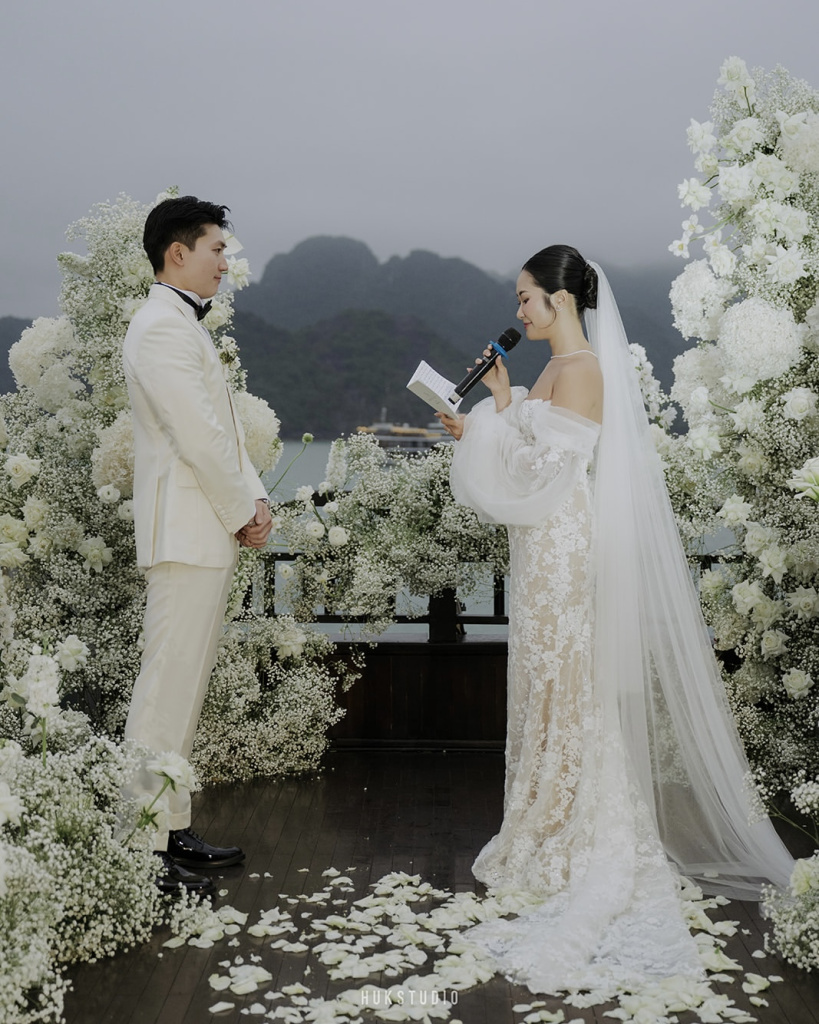
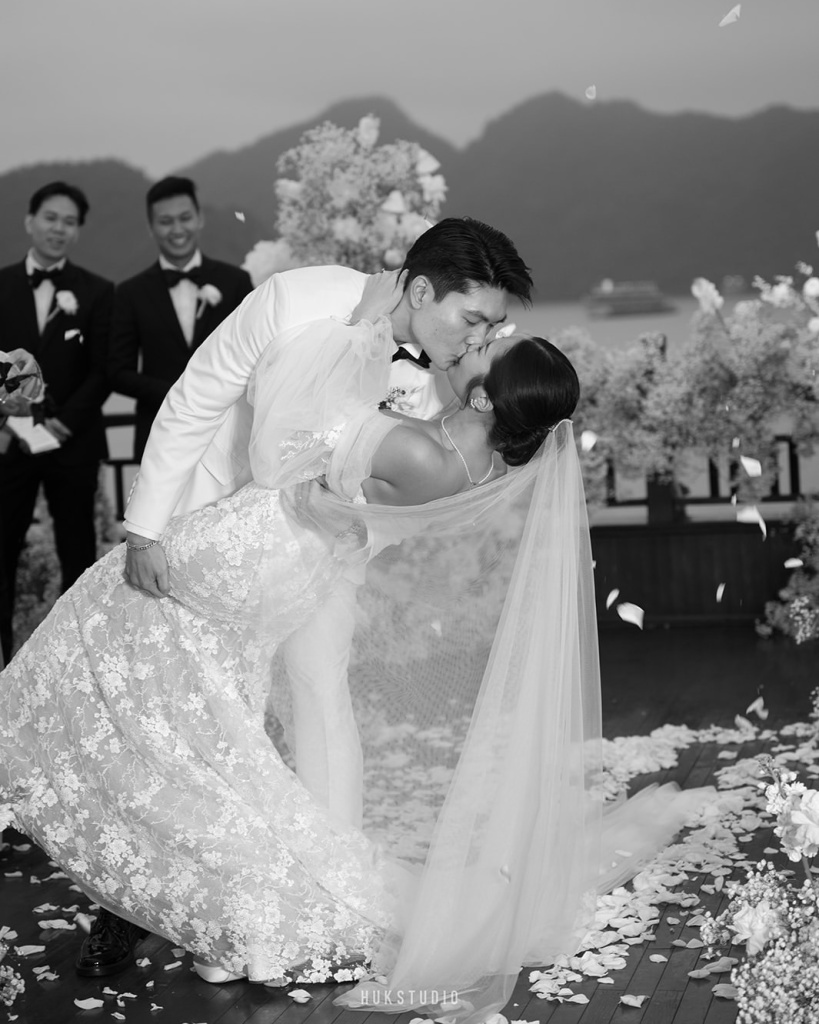
Áo Dài - The Traditional Vietnamese Bridal Wear
The áo dài, with its long silhouette and intricate patterns, is the traditional Vietnamese bridal wear. Symbolizing beauty, elegance, and cultural pride, this attire is typically in vibrant colors like red or pink, which are believed to bring good luck. The modern áo dài embraces a wide range of fabrics and designs, making each bridal outfit a unique piece of art that honors traditional values while celebrating individual tastes.
Crafted from luxurious fabrics such as silk or satin, the áo dài is often adorned with intricate embroidery or beadwork that reflects the craftsmanship and artistry of Vietnamese culture. The tailoring of the áo dài is precise, designed to enhance the gracefulness of the bride as she moves. Over time, the designs have evolved, with contemporary versions featuring modern prints and motifs while still maintaining the traditional form-fitting style and ankle-length trousers.
Bóng Đèn (Wedding Lanterns)
Lanterns are significant in Vietnamese culture, representing light and hope. At weddings, lanterns are used to decorate the venue and are often released into the sky or floated on water, carrying with them prayers and wishes for the couple's future. This tradition, rooted in spiritual practices, continues to enchant with its visual spectacle and deep symbolic meaning.
The use of lanterns at Vietnamese weddings is not only visually stunning but also imbued with layers of symbolism. Traditionally made of silk and bamboo, these lanterns are carefully crafted and often hand-painted with symbols like lotus flowers, dragons, or phoenixes, each carrying a specific meaning. The act of releasing lanterns, whether into the sky or on water, is a metaphor for letting go of past individual lives and embracing a new journey as a married couple. It's a poignant reminder of the transient nature of life and the eternal hope for happiness.
In modern celebrations, this luminous tradition has been adapted to suit various wedding styles and venues, ranging from traditional countryside settings to contemporary urban environments. Whether floating gently down a river or lighting up the night sky, these lanterns create a magical atmosphere that unites guests in a shared moment of joy and celebration. The tradition of wedding lanterns remains a beloved highlight, embodying the union of tradition and modernity in Vietnamese weddings.
Ceremony Without an Officiant
In Vietnamese weddings, it’s customary to have a ceremony that does not involve a formal officiant. Instead, the most respected elder from either the bride's or the groom's family typically leads the ceremony. This elder guides the couple through the various rituals and acts as a conduit for the ancestral blessings. The absence of an officiant highlights the importance of family and ancestral approval in the marriage process.
This tradition underscores the communal nature of marriage in Vietnamese culture, where family integration and blessings are more pivotal than the formalities performed by an officiant. It reflects a community-centric approach to weddings, emphasizing that the union is not just between two individuals but between two families and their ancestors.
Bánh Hỏi (Wedding Feast)
No Vietnamese wedding is complete without Bánh Hỏi, an elaborate feast that features intricately woven fine rice vermicelli topped with chopped scallions and oil. This dish is traditionally served as a symbol of community and togetherness at weddings. It's often accompanied by an array of other dishes, each representing different blessings for the couple, such as longevity, wealth, and health.
Bánh Hỏi is typically prepared with meticulous attention to detail, symbolizing the careful nurturing required in marriage. The fine strands of vermicelli are arranged in intricate layers and often served with grilled meats or seafood, which add richness and depth to the meal. This main dish is usually accompanied by various side dishes including spring rolls, salads, and seasonal fruits, creating a balanced and festive meal that honors the abundance and fertility wished upon the new couple.
In addition to its delicious taste, the presentation of Bánh Hỏi at a wedding is a spectacle of culinary art, reflecting the prosperity and generosity of the hosts. It is often laid out on large platters, decorated with carved vegetables and herbs, turning the meal into a centerpiece of the wedding celebration. This tradition not only feeds the body but also nourishes the communal spirit, reinforcing bonds among family and friends as they share in the joy and hope of the newlyweds' future together.
Xe Hoa (Wedding Car)
The tradition of decorating the wedding car, known as Xe Hoa, is relatively modern but has quickly become embedded in the culture. The car is usually adorned with flowers, ribbons, and a symbol of double happiness. It acts as the chariot that brings the bride to her new home, signifying her transition into married life. This practice blends contemporary aesthetics with traditional symbolism.
The decoration of the Xe Hoa is not just about beauty; it serves as a public declaration of the wedding, signaling to the community that a significant event is taking place. Typically, the car is decorated by close friends and family the night before or the morning of the wedding, making it a fun and festive activity that builds anticipation for the day's events. The selection of flowers and colors is thoughtful, often matching the wedding's overall theme and color scheme, which adds coherence and a touch of personalization to the celebration.
As the bride and groom travel from the ceremony to the reception or their new home, the Xe Hoa becomes a moving symbol of their new journey together. Passersby often honk or shout congratulations, participating in the joy of the occasion. This interactive aspect of the tradition highlights the community's role in supporting and recognizing the union, making the Xe Hoa a beloved and memorable element of weddings in Vietnam.
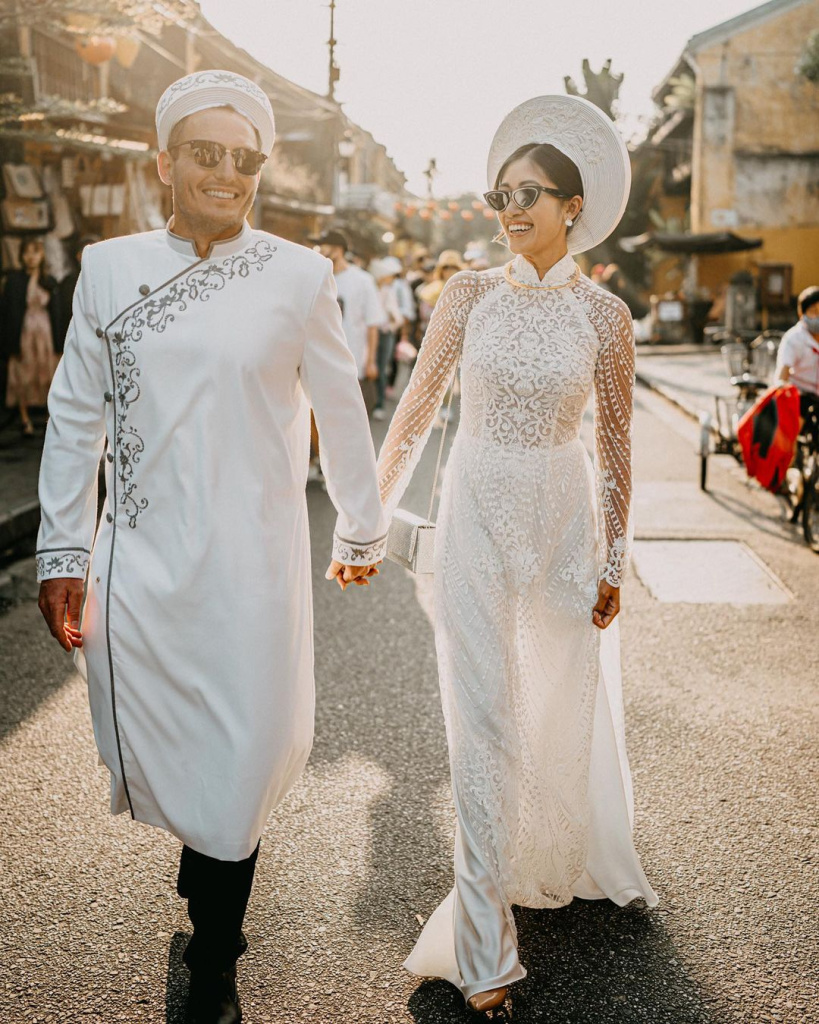
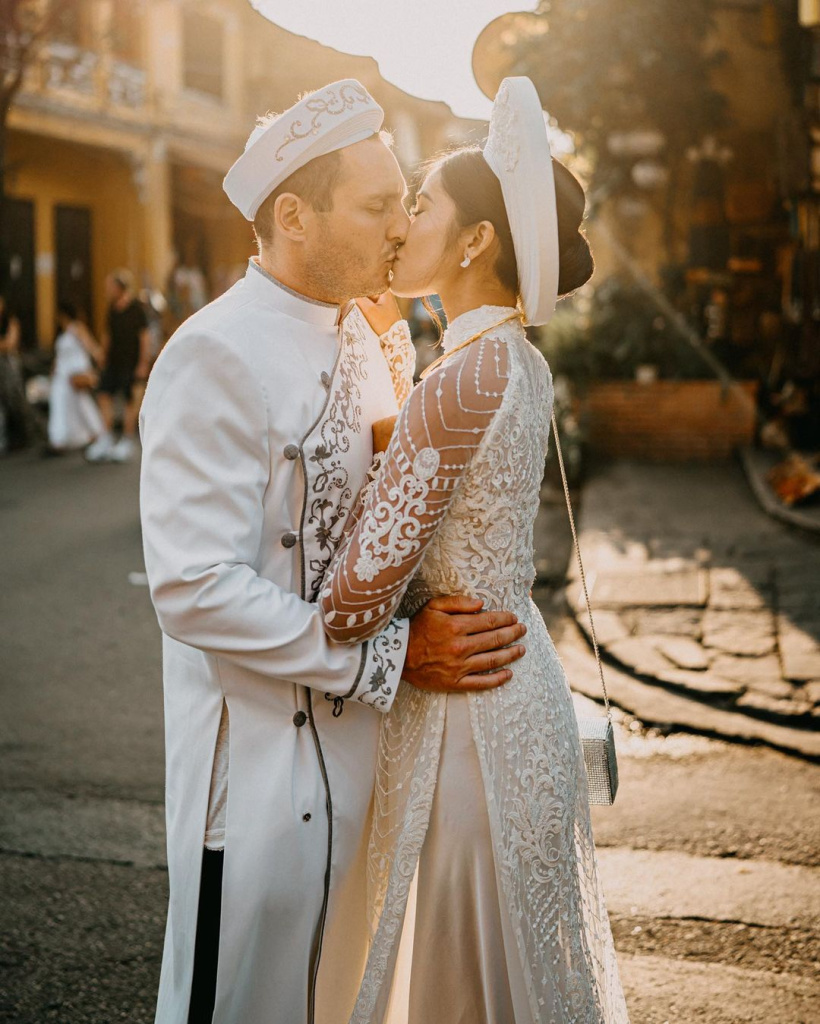
Hair Combing Ceremony
This intimate ceremony is performed on the eve of the wedding. The bride and groom's parents comb their hair, a gesture that is said to smooth out any future difficulties in marriage. Each stroke of the comb carries blessings for the couple, invoking elements of love, harmony, and mutual respect. This serene ritual reflects the deep familial bonds and the passing down of wisdom from one generation to the next.
Held typically at the respective homes of the bride and groom, the ceremony is conducted by someone deemed to have good fortune, such as a happily married relative or an elder. The combing is done in a sequence of strokes, each accompanied by specific blessings or well-wishes, such as longevity, fidelity, and prosperity. This ritual is not only about beautification but also serves as a symbolic cleansing, preparing the couple for their new life together.
Đón Dâu (Receiving the Bride)
Đón Dâu is a lively part of the wedding day when the groom and his entourage visit the bride's home to escort her back to his place. The groom's procession is usually met with playful challenges set by the bride's friends, testing his commitment and love for her. This tradition is full of joy and laughter and often includes negotiating with symbolic gifts like wine, tea, and fruits.
Upon arriving at the bride's home, the groom is expected to demonstrate his worthiness and his intentions. This may involve a series of tasks or questions designed by the bride's family and friends, ranging from singing a song to reciting vows or even performing a dance. The playful nature of these challenges helps to ease nerves and adds an element of fun to the ceremony. Once the groom successfully completes these challenges, he is welcomed into the bride's home, symbolizing the acceptance of the union by her family.
The procession then leads the bride to the groom's home, signifying her transition into a new family. This part of the ceremony is usually accompanied by music and dancing, creating a festive atmosphere that celebrates the joining of the two families. The journey is not just a physical relocation but a significant cultural passage that marks the bride’s formal integration into the groom's household. This tradition underscores the importance of family in Vietnamese culture and highlights the communal nature of marriage.
Throwing of the Conical Hat
Derived from ancient agricultural practices, this unique tradition involves the groom throwing a conical hat during the wedding ceremony. It symbolizes the shedding of his bachelorhood and is believed to ward off evil spirits. The bride might also throw a smaller hat as a sign of leaving her maiden life behind. This act is embraced with cheer and is a favorite moment for many guests.
The conical hat, known locally as the nón lá, is a traditional Vietnamese symbol of protection and labor, making its presence in Vietnamese wedding ceremonies highly symbolic. By throwing these hats, the couple signifies throwing away their past individual lives to embrace their future together. This tradition is often performed with great enthusiasm and is followed by applause and laughter, enhancing the festive spirit of the occasion.
Moreover, this practice also includes a playful aspect where guests can try to catch the hats, believing that catching them will bring good luck and fortune. This adds an interactive and joyful element to the wedding, further uniting the guests and the couple in a shared moment of cultural celebration.
Cưới Hỏi (Wedding Announcements)
Traditionally, weddings were announced by the beating of drums and the spread of word by village elders. In modern times, this has transformed into beautifully designed wedding invitations. However, some rural areas still observe the old way with a contemporary twist, using loudspeakers or social media to reach more people quickly.
The evolution of wedding announcements in Vietnamese culture reflects the blend of traditional and modern communication practices. Today's announcements might include not only physical invitations but also digital ones, which can be sent across the globe in seconds, allowing families who are far apart to share in the joy. These invitations often feature elements of traditional Vietnamese design, such as bamboo prints or images of the lotus, connecting the modern practice back to cultural roots.
Gate Crashing Games
Gate crashing games are a fun and important part of modern Vietnamese weddings. These games are designed to test the groom's resolve and to entertain the guests. From answering questions about the bride to performing funny tasks, these activities add a playful air to the seriousness of the wedding rituals.
Originating from the idea that the groom should prove his worthiness to the bride's family, these games have evolved into a lively and joyful tradition that often involves both families. They can range from simple quizzes about the couple’s relationship to more elaborate tasks like serenading the bride or dancing. The objective is to create laughter and joy, making the wedding memorable for guests and participants alike.
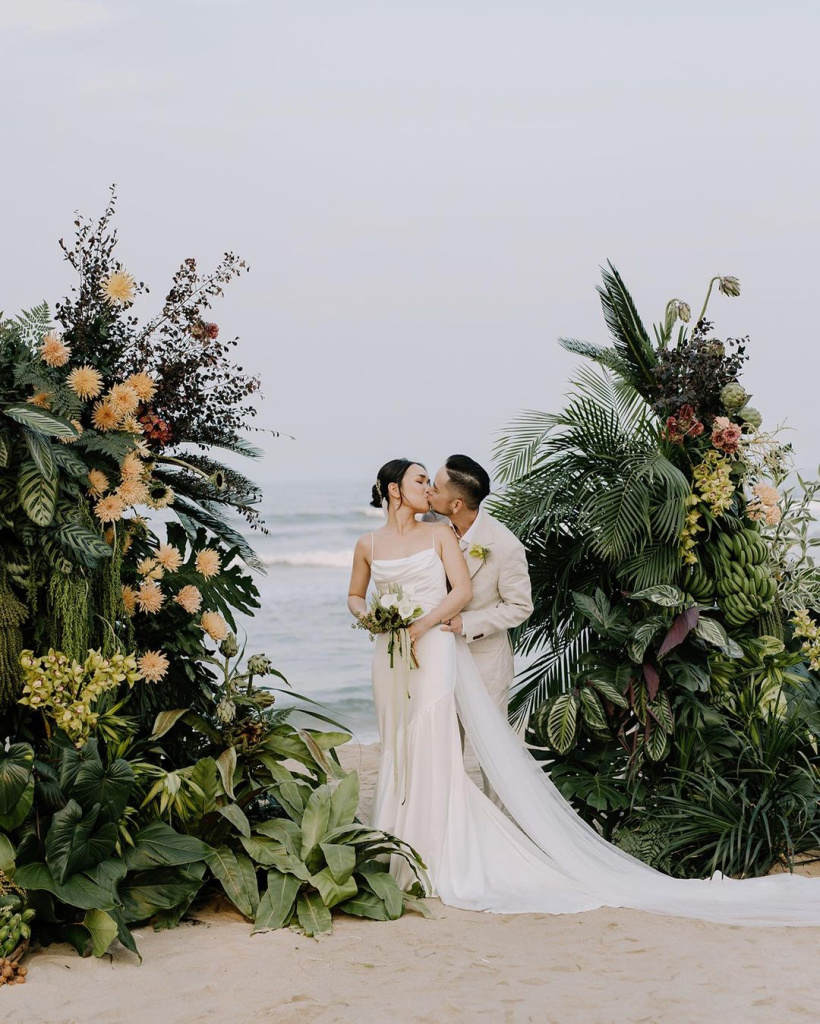
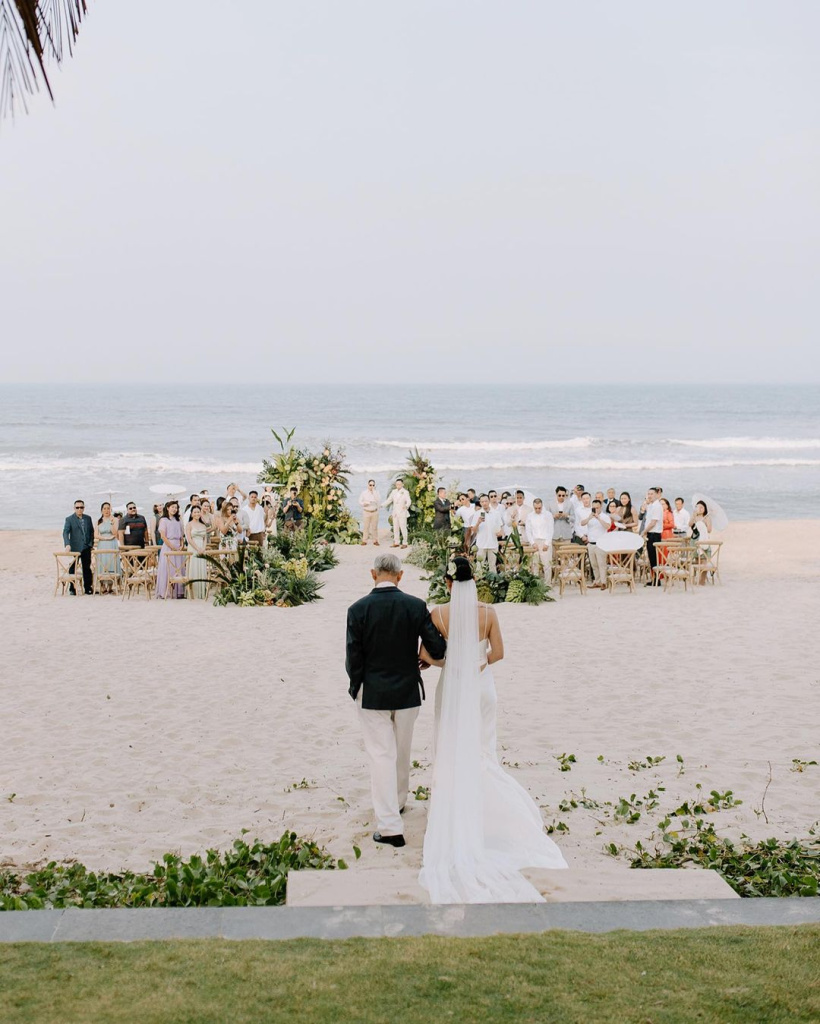
Lion Dancers
Lion dance performances are a spectacular feature at many Vietnamese weddings, symbolizing power, wisdom, and good fortune. These performances are typically bright and noisy affairs, intended to ward off evil spirits and bring joy and prosperity to the newlyweds. The dancers, wearing elaborate lion costumes, perform acrobatic maneuvers and dance to the beat of drums and cymbals.
Incorporating lion dancers at a wedding is considered a lucky charm for the couple’s future. It is also a visual and musical celebration that entertains guests and makes the wedding memorable. This tradition is often seen as a highlight of the wedding, embodying the festive and vibrant spirit of Vietnamese cultural celebrations.
Gift Exchange
The gift exchange is a critical component of Vietnamese weddings, involving both families presenting each other with meticulously arranged lacquered boxes or trays containing betel leaves, areca nuts, fruits, and other gifts. This tradition underscores the importance of giving, receiving, and reciprocating in Vietnamese culture. It’s a reciprocal gesture that symbolizes the joining of the two families and their shared responsibilities in supporting the newlyweds.
Each gift is chosen with care, reflecting respect and good intentions towards the other family. The betel leaves and areca nuts are particularly significant, as they are traditional symbols of love and unity in Vietnamese folklore. These gifts are not just material but carry deep symbolic meanings, each representing different hopes for the couple's future, such as fertility, longevity, wealth, and happiness.
This exchange is often accompanied by formal speeches and traditional music, enhancing the ceremonial atmosphere. The process is not only a ritualistic formality but also a moment of bonding between the two families, reinforcing the communal and familial nature of marriage in Vietnamese culture. The careful selection and presentation of these gifts reflect the respect and importance of familial bonds in Vietnamese society.
The Second Reception
Many Vietnamese couples host a second reception for friends and extended family members who could not attend the main ceremony. This reception is usually less formal and allows the couple to celebrate with a broader community. It reflects the inclusive nature of Vietnamese society and the importance of community celebration. Often held at a different venue, this reception can sometimes take place on a different day to accommodate more guests.
The second reception offers a relaxed atmosphere where the couple can interact more freely with their guests. It typically features entertainment, dancing, and sometimes games, providing an opportunity for the newlyweds to showcase different aspects of their personalities and cultural heritage. This event often includes a buffet-style meal, which allows guests to enjoy a variety of traditional Vietnamese foods.
The Final Blessing
At the end of the wedding festivities, the elders of both families offer their final blessings to the couple. This may include advice, anecdotes, and well-wishes for the newlyweds’ future. This solemn, touching moment bridges the traditional and the personal, marking the start of the couple's journey in a spirit of unity and love. It is a revered practice that highlights the role of the elder as a custodian of wisdom and cultural tradition.
During this ceremony, the elders might use traditional Vietnamese symbols and language to convey their blessings, often invoking the ancestors for protection and guidance. The couple listens intently, usually kneeling in front of the elders as a sign of respect and receptivity to their words. This ritual not only reinforces the cultural values of respect and filial piety but also serves as a spiritual grounding for the couple’s future together.
